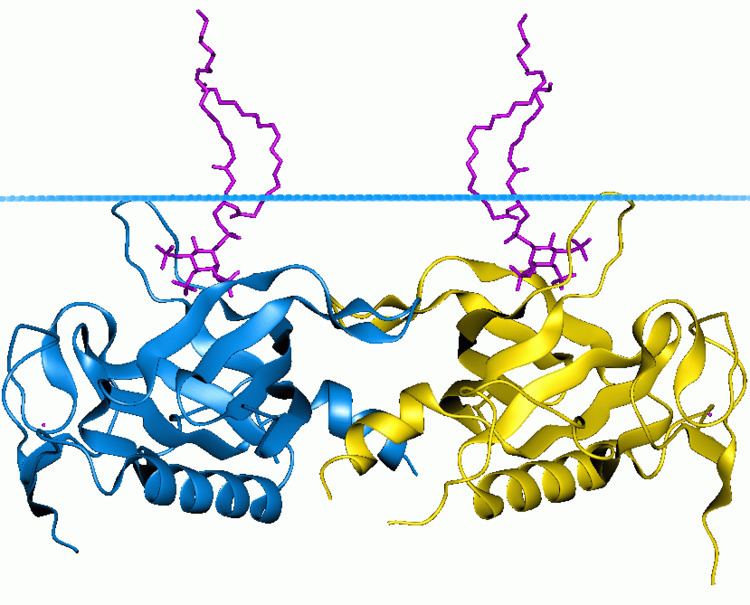Entrez 695 | Ensembl ENSG00000010671 | |
 | ||
External IDs OMIM: 300300 MGI: 88216 HomoloGene: 30953 GeneCards: BTK | ||
Bruton's tyrosine kinase (abbreviated Btk or BTK) also known as tyrosine-protein kinase BTK is an enzyme that in humans is encoded by the BTK gene. BTK is a kinase that plays a crucial role in B-cell development.
Contents
Function
BTK plays a crucial role in B cell maturation as well as mast cell activation through the high-affinity IgE receptor.
Btk contains a PH domain that binds phosphatidylinositol (3,4,5)-trisphosphate (PIP3). PIP3 binding induces Btk to phosphorylate phospholipase C, which in turn hydrolyzes PIP2, a phosphatidylinositol, into two second messengers, inositol triphosphate (IP3) and diacylglycerol (DAG), which then go on to modulate the activity of downstream proteins during B-cell signalling.
Clinical significance
Mutations in the BTK gene are implicated in the primary immunodeficiency disease X-linked agammaglobulinemia (Bruton's agammaglobulinemia); sometimes abbreviated to XLA. Patients with XLA have normal pre-B cell populations in their bone marrow but these cells fail to mature and enter the circulation. The Btk gene is located on the X chromosome. At least 400 mutations of the BTK gene have been identified.
BTK inhibitors
Approved drugs that inhibit BTK :
Various drugs that inhibit BTK are in clinical trials:
Discovery
Bruton's tyrosine kinase was discovered in 1993 and is named for Ogden Bruton, who first described XLA in 1952.
Interactions
Bruton's tyrosine kinase has been shown to interact with:
